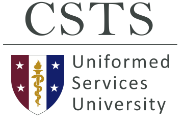What steps to take when PSB-CY is reported
Download PDF HERE
- Reports of problematic sexual behavior between children and youth (PSB-CY). . When a potential incident of PSB-CY is reported by someone in an Army organization (i.e., the DoD Educational Activities [DoDEA], the Child Development and Youth Programs [CD/YP]) or another source, the Family Advocacy Program (FAP) must evaluate the incident using the Non-Clinical Referral Tool (NCRT, DD form 3179), to determine whether the behavior is normal, cautionary, or problematic. There is no incident determination committee for PSB-CY.
- Convening the multidisciplinary team (MDT). If the incident is problematic, the FAP activates the installation MDT to determine if members from the expanded MDT need to be involved to recommend treatment, counseling, and appropriate interventions. The MDT operates as a collegial, collaborative relationship. Although the MDT is coordinated by FAP, there is no hierarchy. It is a shared mission activity to respond to the cases; it is a huddle.
- Who is on the MDT? The core membership will include the FAP Manager and representatives from the Criminal Investigation Division (CID), the CD/YP, and the DoDEA (when the DoDEA is the referral source). The membership can be expanded on a case-by- case basis to include the Staff Judge Advocate, the Medical Treatment Facility FAP, Child Protective Services (CPS), the Child Advocacy Center, and community agencies serving the installation (see here for additional information on the MDT).
- What now when there is PSB-CY? The MDT reviews referral, addresses safety needs, drafts an initial coordinate course of action, and develops strategies for parent engagement.
- Follow-on activities. There are many routes for assistance for children, youth, and parents. Parents are offered support and services and trauma-focused assessment is conducted by FAP clinicians. Case management follows that includes MDT review of cases until case is closed.



